Understanding your solar electric bill
For customers who consume more electricity than their solar panels generate in a year, you are net energy consumers. For customers whose solar panels produce more energy than they consumer, see the net energy producers page.
Congratulations on powering your home with solar! If you applied for solar before April 15, 2023, your electricity use is measured through Net Energy Metering (NEM). That means your meter only counts the electricity you use that exceeds the amount of energy you produce:
During the day when the sun is shining, your solar panels generate electricity. At night you consume electricity from the grid. Buying that electricity from Peninsula Clean Energy has three benefits, when compared with PG&E:
- Our electricity is generated from cleaner sources than that of PG&E – reduced carbon emissions are critical for the environment.
- Our electric generation costs you less than the same service from PG&E. Note that our electric generation charges on your bill are instead of PG&E’s.
- In addition, for customers with Net Energy Metering (NEM), we pay more for the solar energy you generate than PG&E does
While PG&E does not charge Peninsula Clean Energy customers for electric generation, they continue to charge for electric delivery, which includes the use and maintenance of their poles, wires, and other equipment.
Below, we explain important components of your bill and where to find them.
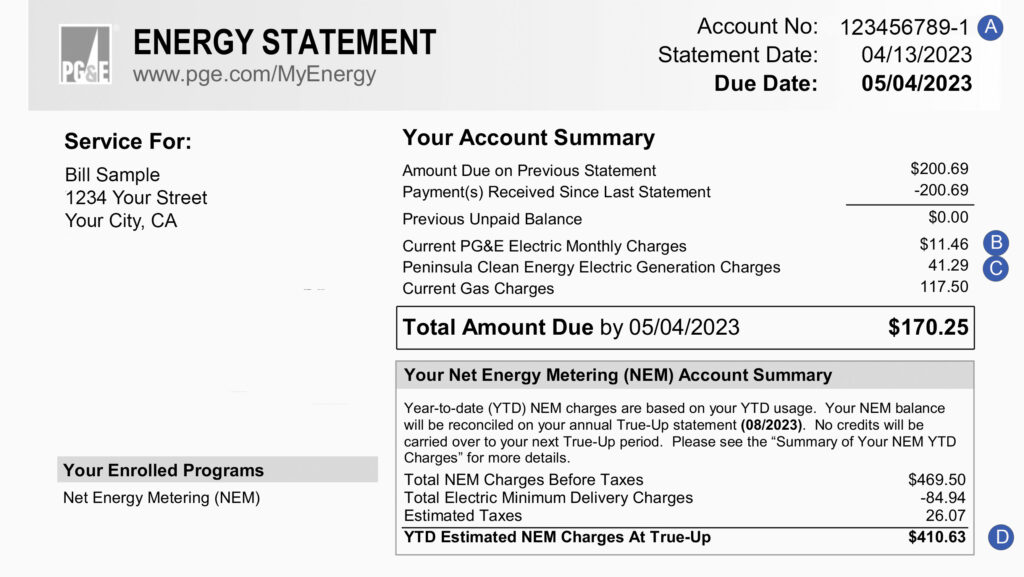
- This is your PG&E account number. It is helpful to have this number when you are discussing your bill with either PG&E or Peninsula Clean Energy.
- PG&E delivery charges include maintenance of the poles, wires, and other infrastructure. These charges also include customer service and billing. NEM customers pay only the minimum monthly charge. Yearly, at the time of your true up, you pay PG&E for delivery charges for energy consumed that is more than the amount produced by your solar panels. Rates for delivery charges are the same whether you receive your electricity generation from PG&E or Peninsula Clean Energy.
- This is Peninsula Clean Energy’s charge for generation of power. It is instead of PG&E’s charge, and costs less and is cleaner than PG&E’s power generation.
- PG&E’s year-to-date estimated NEM charge or credit is a running total of the amount you owe or are credited for PG&E’s electricity delivery. Once per year PG&E settles the balance with either a charge (for net consumers) or a payment (for net producers).
(Note: customers with a paired battery do not receive this information)
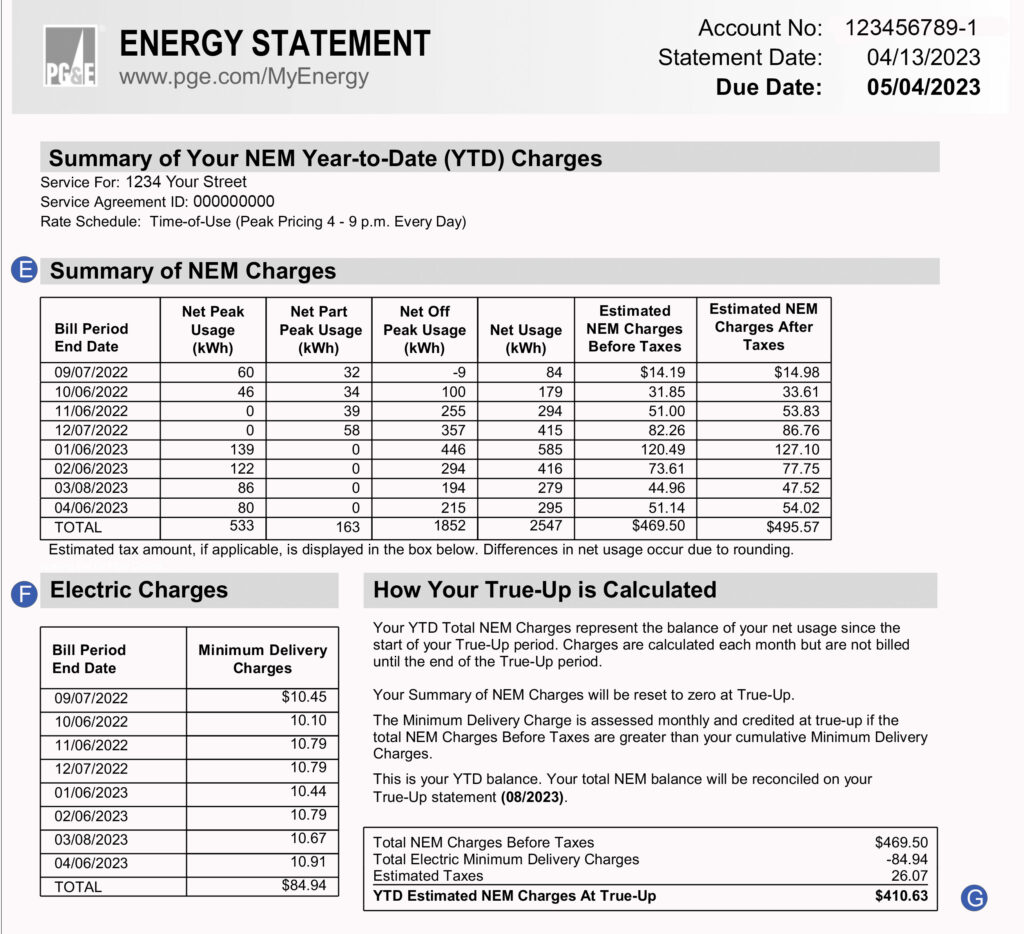
- PG&E’s monthly charge for electric delivery for net energy consumed, if any, and the time-of-use delivery charges. Note that electric delivery and electric generation charges are separate.
- NEM customers pay a minimum delivery charge. This is credited back during the yearly true-up if the total NEM charges (in E, above) are greater than the cumulative minimum charge.
- Here is your year-to-date net charge. Net consumers of energy will have a net charge, while net producers of energy will have a net credit.
(Note: this information presented differently for customers with a paired battery)
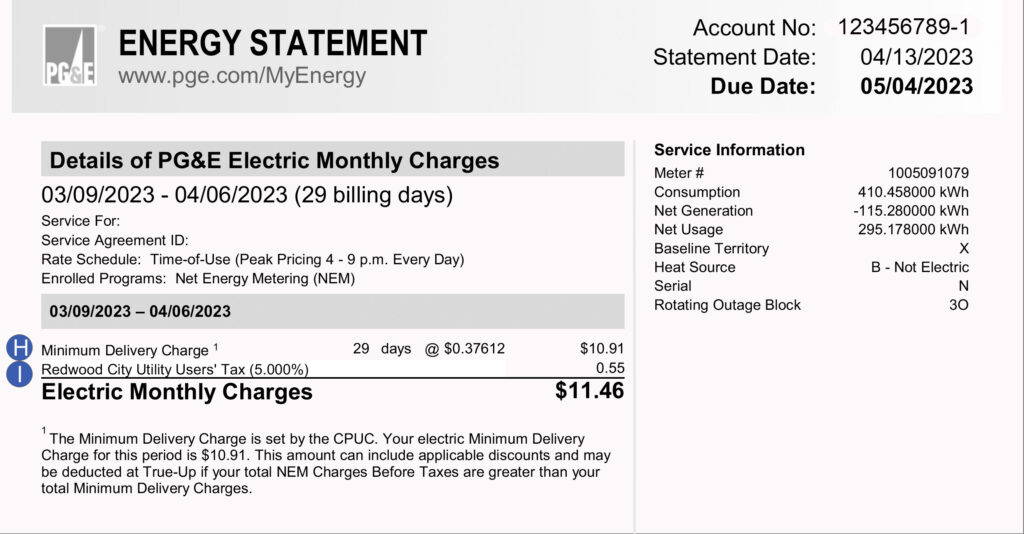
- This is your fixed minimum delivery charge.
- Some cities have a local utility users tax.
(Note: customers with a paired battery do not receive this information)
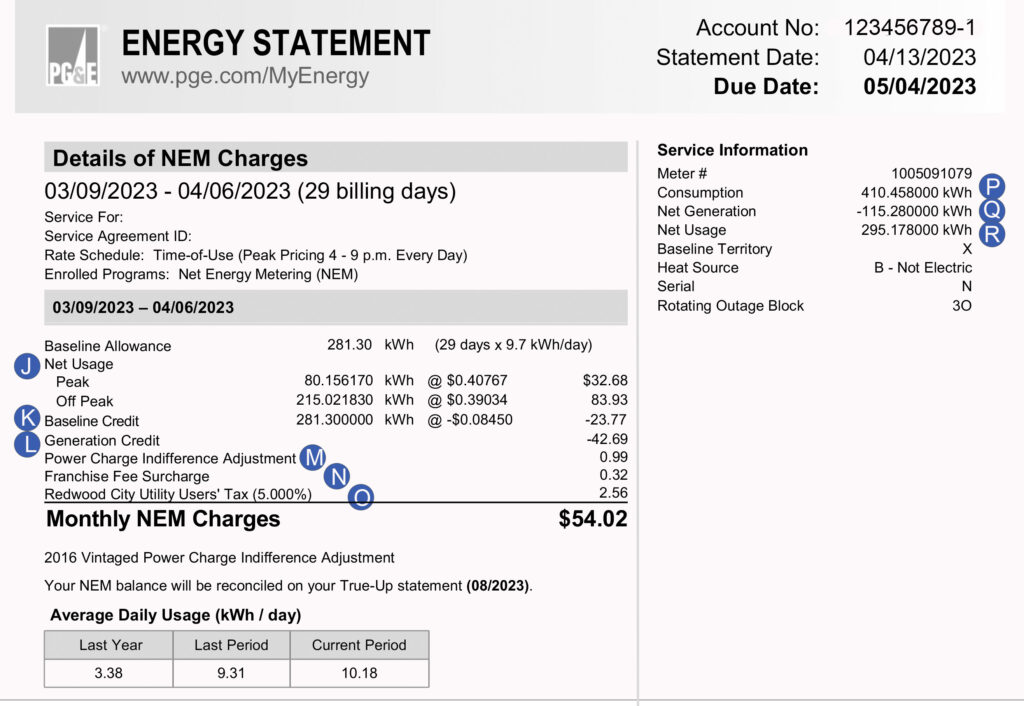
This is your net electricity usage during this period. If you are on a time-of-use rate, charges are higher during peak hours (4-9 pm every day), and lower during all other hours. These are “bundled” rates, meaning they include PG&E’s rates for both electricity generation and delivery.
- You receive a baseline credit each month, which allows a certain amount of energy to be used at the lowest cost.
- The generation credit is provided by PG&E since you are a Peninsula Clean Energy customer. For this bill, you would have paid $42.69 for PG&E generation.
- The Power Charge Indifference Adjustment (PCIA) is a fee PG&E charges to cover the
cost of electricity they contracted for on your behalf prior to Peninsula Clean Energy.
Note that we include this in our rates and cost comparisons and ensure that you save
money with Peninsula Clean Energy generation when compared to PG&E generation. - This Franchise Fee (FF) surcharge pays for PG&E’s right to use public streets to deliver
electricity to your home. - Some cities apply a utility users tax.
- Your total electricity consumed in the billing period.
- The solar energy you produced during the period.
- The net consumption or production.
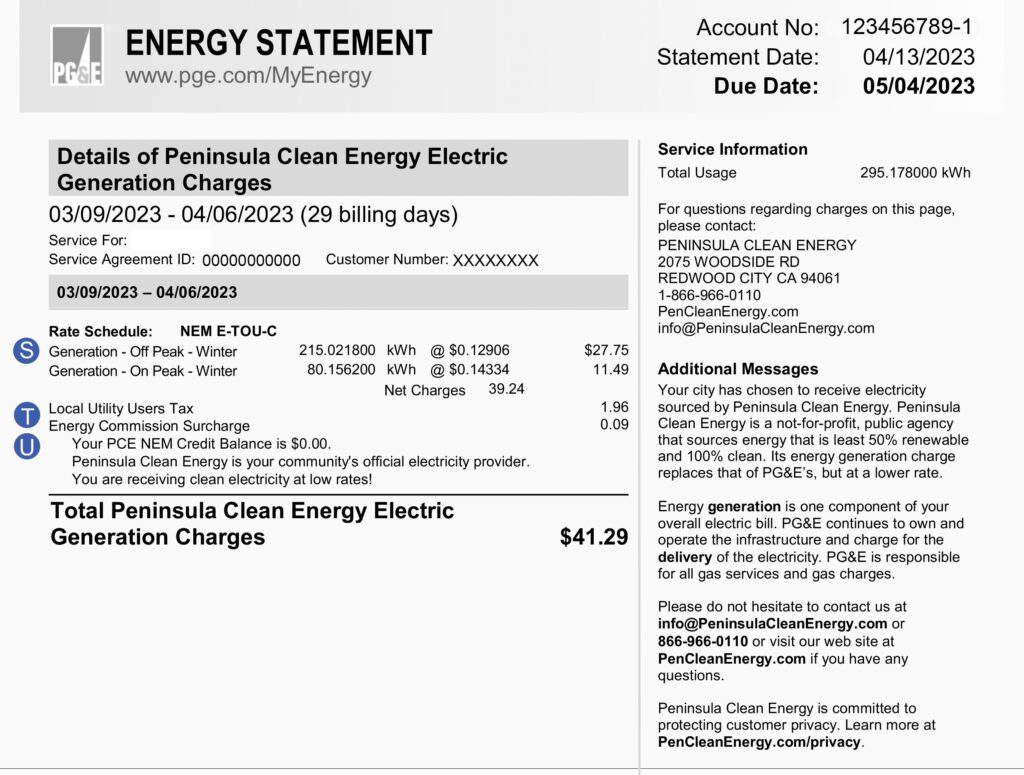
- Detail of Peninsula Clean Energy electric generation charges for net usage according to the amount used during the on-peak hours (4 p.m. – 9 p.m. every day) and the less expensive off-peak hours
- Some cities charge a utility tax. All bills include a charge by the California Energy Commission
- This is your NEM solar credit balance
Still need help?
Give us a call at 1-866-966-0110